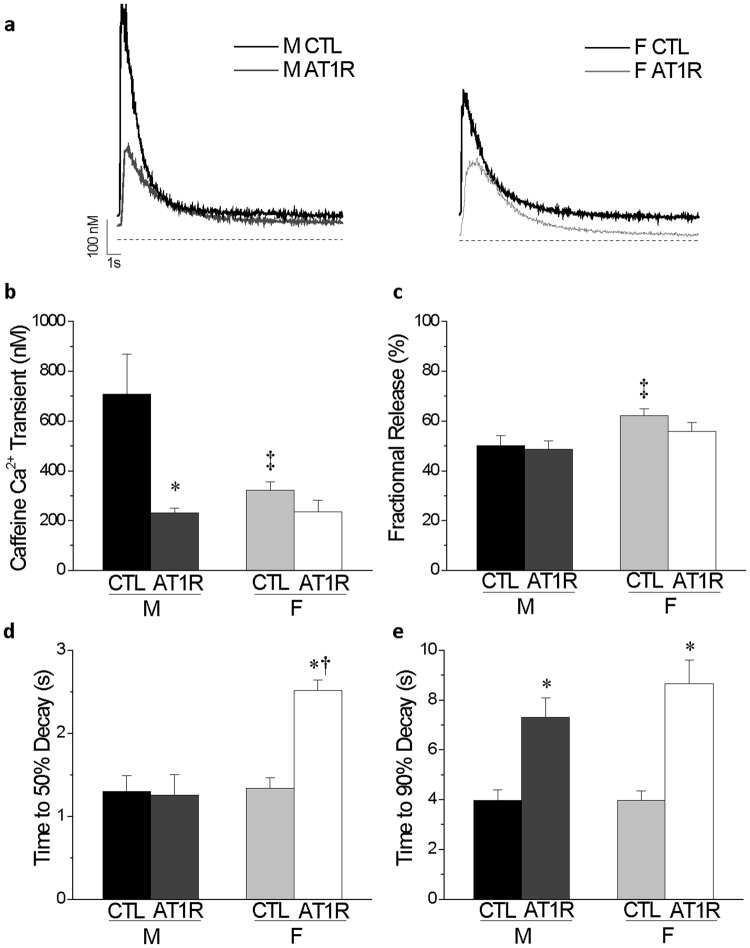Figure 6.
Caffeine-induced Ca2+ transients are differently affected in male and female AT1R myocytes. (a) Representative recordings of caffeine-induced Ca2+ transients in ventricular myocytes of male and female CTL and AT1R mice are shown. (b) Mean data for caffeine-induced Ca2+ transients show that female have lower SR load than male in CTL conditions (‡p = 4 × 10−5) and that SR load is only reduced in male AT1R myocytes (*p = 0.0004). (c) Fractional release defined as the ratio of Ca2+ transient amplitude over the caffeine-induced Ca2+ transient is increased in female CTL in comparison to males (‡p = 0.01). Time to 50% decay (d) and time to 90% decay (e) are presented (*p < 0.0005 vs. sex-matched CTL, †p = 2 × 10−5 vs. M AT1R, ‡p≤0.01 vs. M CTL) (M CTL n = 18, M AT1R n = 22, F CTL n = 28, F AT1R n = 14).

